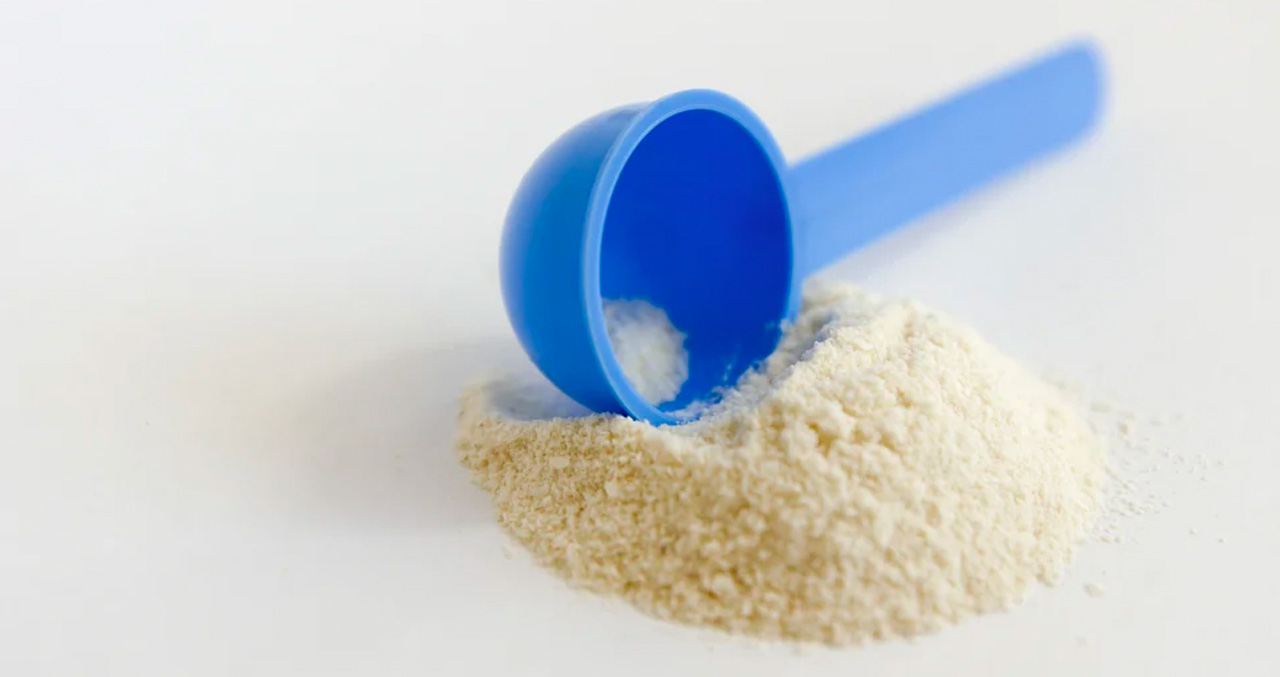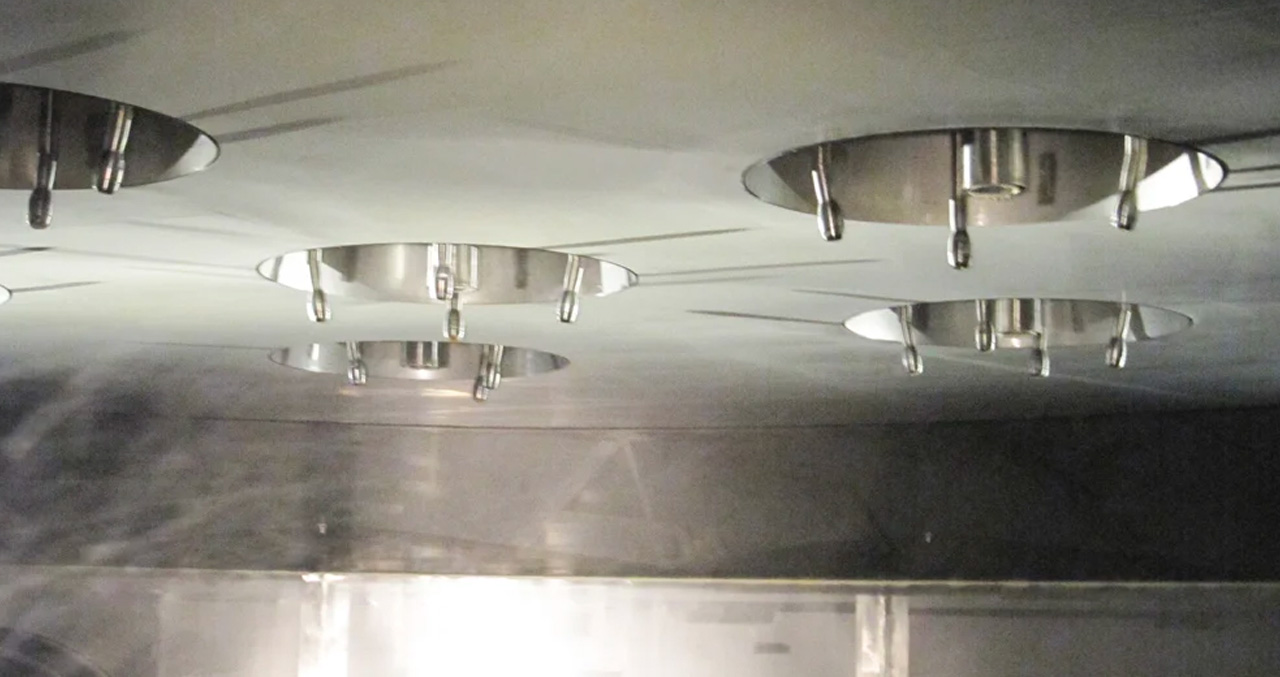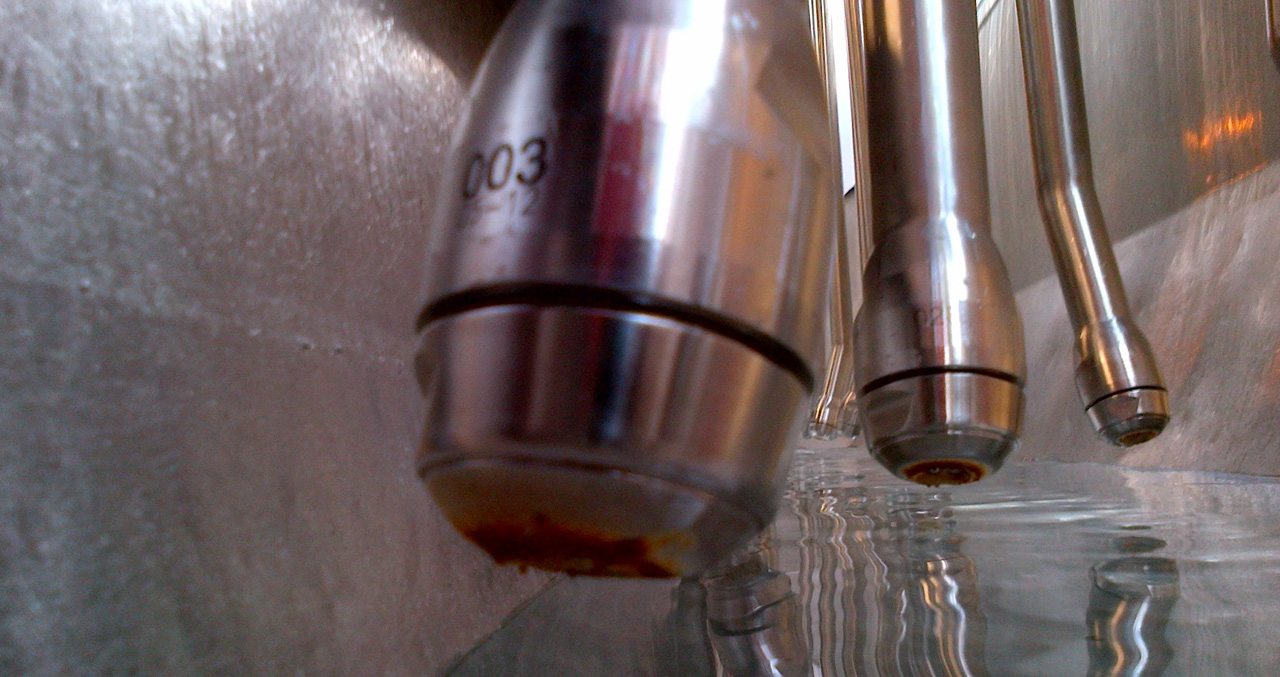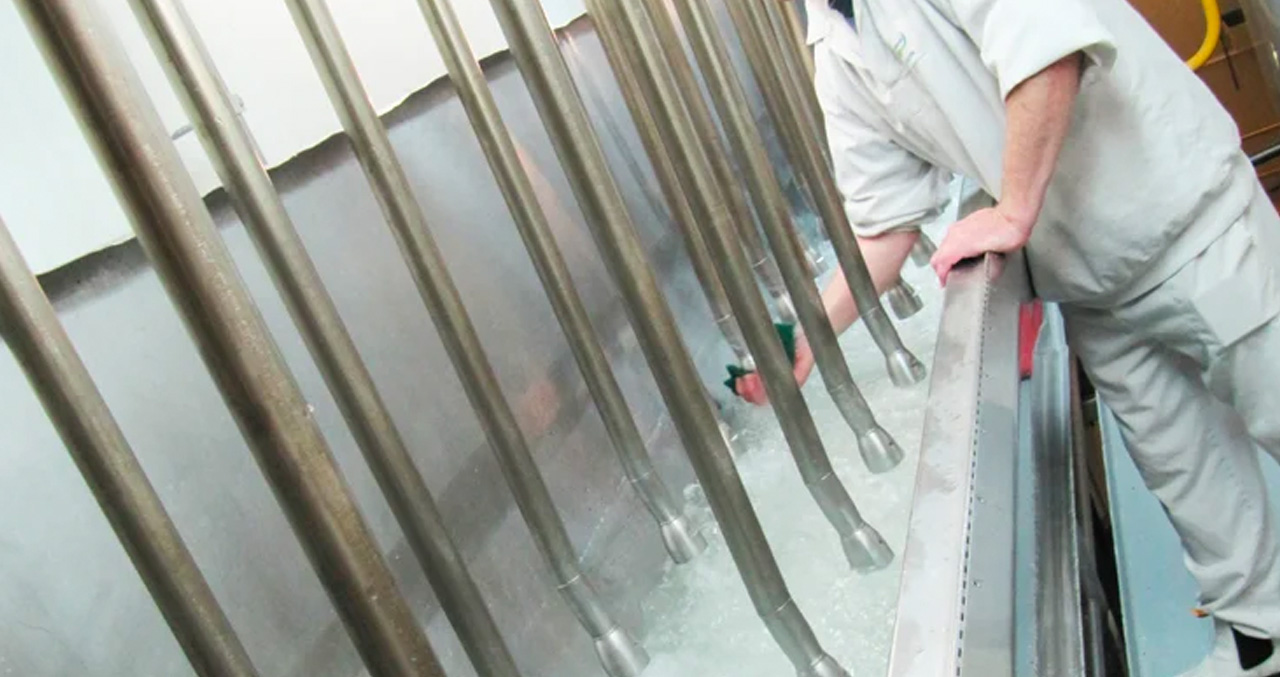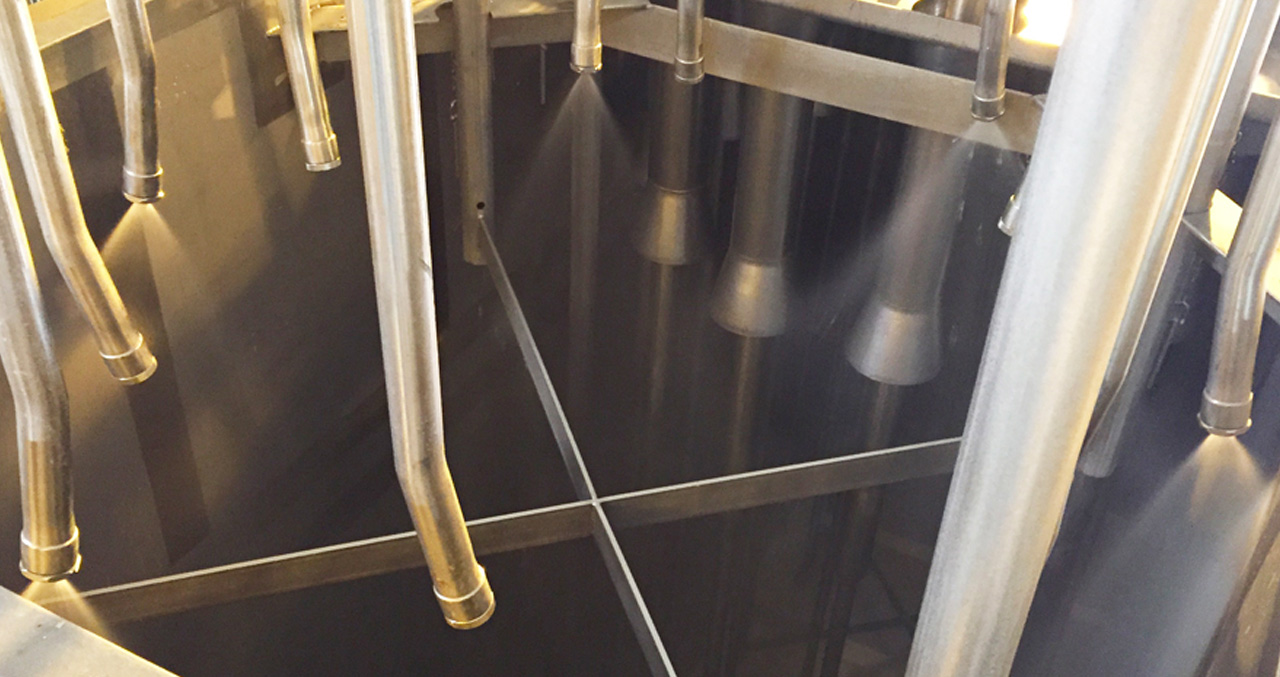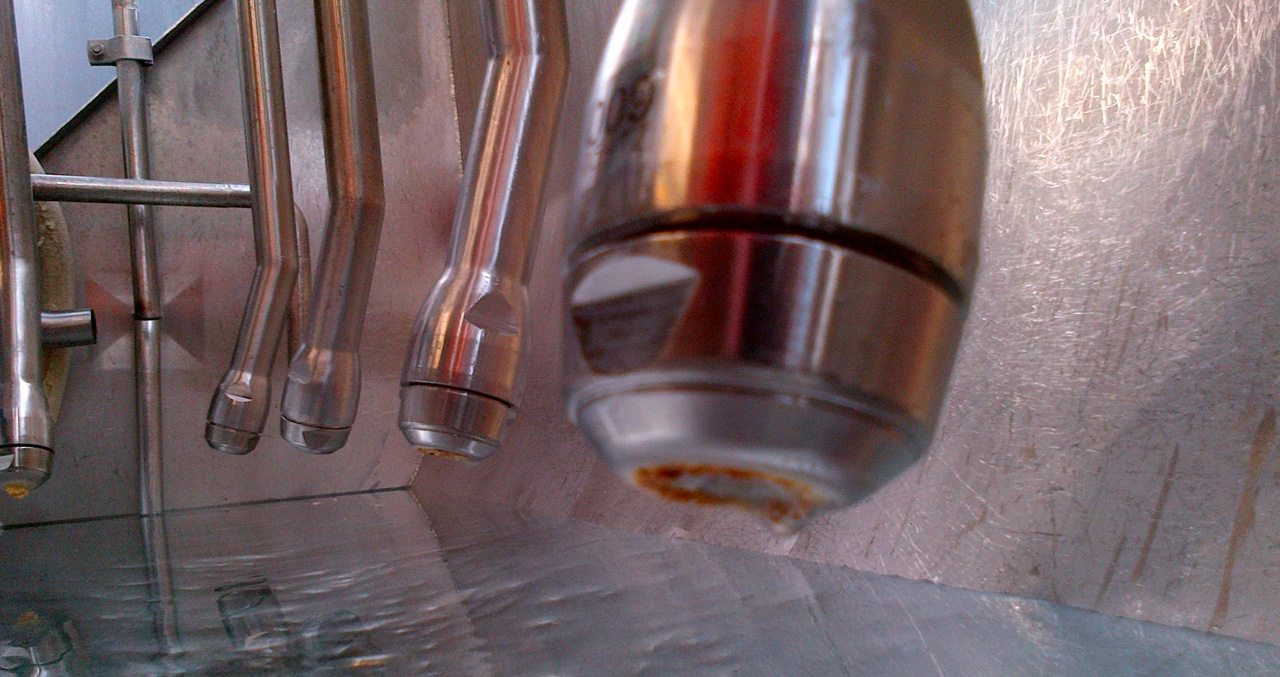We’ve put together 10 important facts to help you understand spray dry nozzle performance, code compliance and safety.
1. Hygiene and ease of cleaning in nozzle design is often overlooked
Spray dry plants are venturing into new markets that demand a higher level of hygiene. It’s increasingly difficult to meet these hygiene levels and remain competitive when cap chamber design in traditional spray nozzles requires so much of your time for cleaning and maintenance.
A solution is within easy reach. Spray Nozzle Engineering’s Click&Dry nozzles are designed to minimise bearding and reduce cleaning time. Their smooth internal profile and efficient fluid path take hygiene to the next level. They give you back time to spend on more productive tasks.
2. Concentric clasp technology increases spray performance and wear part life
Traditional spray dry nozzle design has not kept up with spray dryer technology. To accommodate the frequent disassembly of parts in these older nozzles, excessive radial clearances are required and this leads to inconsistent spray performance, pressure loss and decreased wear life.
Click&Dry’s patented clasp technology ensures that wear parts are always concentric, meaning a more consistent spray pattern, angle, droplet size, therefore a better spray performance. Additionally, the clasp system makes unnecessary direct press contact that results in costly breakages. With internal elements that are concentrically aligned, the design allows for smarter removal of wear parts and easy extraction if necessary.
3. Nozzle stress compliance is critical
According to ASME B31.3 (the international standard for pressure piping) nozzles must be designed to function at a dryer’s maximum operating pressure. Unfortunately, some nozzles operate in highly stressed conditions – exceeding their recommended fatigue cycles. This heightens the risk of failure and presents a safety risk.
Strict code compliance may have already been adopted on your plant pipework, but it’s important that this extends to the nozzles welded to that pipework. Click&Dry nozzle hardware, in keeping with ASME B31.3, is designed with safety factors approaching 2 and above.
4. High pressure sealing code compliance is essential
When non-compliant, incorrectly specified and poorly maintained spray nozzle seal gland systems are used there is a leakage risk, as well as a fire risk. Older style radial seal systems, for example, can suffer from assembly O-ring seal drag and tearing, and this compromises critical sealing, which is a major cause of radical cap leakage.
Global seal codes prescribe a ‘no gap’ seal arrangement to prevent seal extrusion and leakage at dryer operating pressures moving above 100 BarG.
Most, if not all, of these problems can be avoided by using the Click&Dry ‘No Gap Axial Seal’ arrangement. It is designed for pressures well above typical dryer operating pressures.
5. Product build-up and bearding can be greatly reduced
Nozzle build-up, or bearding, increases the risk of fire. Traditionally designed nozzles create this risk because they have an older-style higher cap profile. This produce intensified bearding, lower the hygiene standard and require more cleaning.
This can all be avoided by replacing traditional nozzles with Click&Dry’s Seal-In-Disk orifice systems. The O-ring in these caps is eliminated, resulting in a lower outer-face profile that significantly reduces bearding. By removing the O-ring groove in the cap, it produces improved powder without bearding, improving cleaning and hygiene.
6. Checking valves reduces scorches particles
Did you know that you can control nozzle drips by retrofitting non-drip valves in your existing nozzle systems? You can, and it will help reduce scorched particles and maintain the quality of your milk powder.
Click&Dry’s patented Drip Pro design does more than alleviate the common problem of drips, it improves reliability. Better yet, since the first Drip Pro was introduced, a second non-drip valve has been designed and manufactured. Called the Drip Pro Hi- Flo, it has become one of the best performing anti-drip check valves on the market.
WATCH WEBINAR RECORDING
7. Easy assembly and handling reduces opportunities for leakage
One of the long-standing problems of traditional spray nozzle design is that it’s too easy to incorrectly assemble the nozzle. This is because you can’t see if the orifice O-ring has been inserted after the orifice disc has been installed in the cap. Other components in older style nozzles can unwittingly be installed upside down and become dislodged and misaligned during tightening.
This results in leakage, but the Click&Dry spray nozzle system has a solution to that as well. Operators can pre-assemble the swirl/orifice clasp and safely see the orifice O-ring housed in the assembly before screwing down the cap.
8. Thread damage is not normal
Plants sometimes operate spray lances with thread systems, which are too fine to resist normal impact damage. These fine threads are also more likely to cross thread.
The heavy duty female threaded lance fittings designed by Click&Dry are coarser and more robust. They have heavily concealed sealing surfaces that are resistant to normal impact damage. This innovation is the result of 10 years of nozzle spray lance research and manufacture.
9. Nozzle seal face damage can be avoided
When you operate spray lances that have exposed nozzle hardware sealing surfaces it can result in impact damage, sealing failure, leakage and even fire.
Some time ago Click&Dry introduced sealing face skirts on the female lance body and cap. These sealing face skirts reduce direct impact damage in all important sealing faces and protect the no gap axial sealing system.
10. Proper handling guides should be available for your nozzle system
The Approved Code of Practice for Pressure Equipment requires that plant owners maintain records of plant equipment, along with documented evidence that their equipment satisfies the safety requirements of the Code.
It also is recommended that placards and operating data provided by nozzle suppliers be made available in control rooms.
Read more about spray drying nozzle technology

